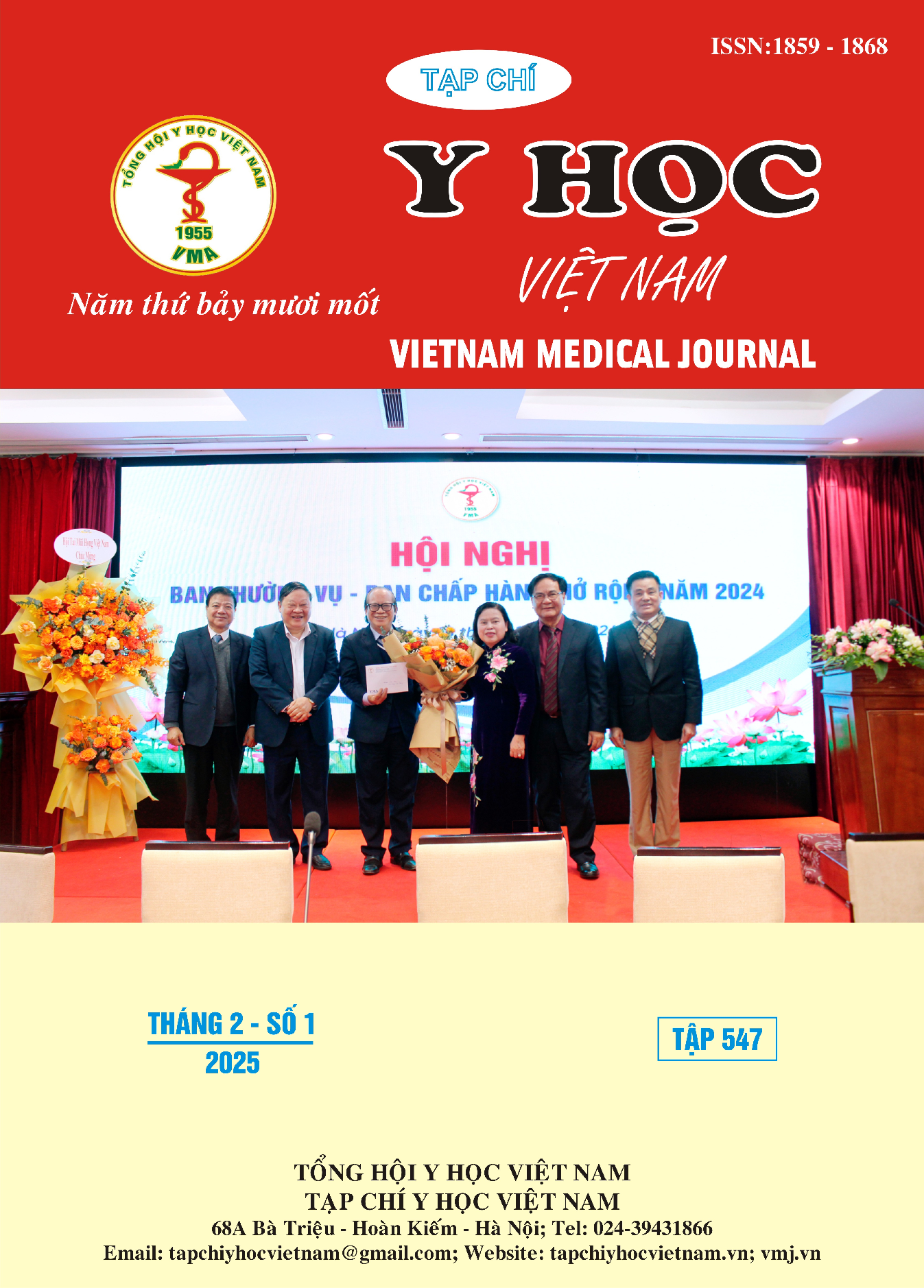NHẬN XÉT KẾT QUẢ CHUYỂN PHÔI ĐÔNG LẠNH NGÀY 5 VÀ NGÀY 6 TẠI BỆNH VIỆN ĐÔNG ĐÔ
Main Article Content
Abstract
Objectives: To compare the outcomes on the 5th-day of frozen blastocyst-stage embryo transfer with those on the 6th-day day at Dong Do Hospital in Hanoi. Methods: A retrospective descriptive study on 442 patients < 35 years of age, with the transfer of very good or good frozen embryos on the 5th or 6th day, without embryo biopsy from January 2022 to April 2024. Results: 345 patients were in the 5th-day embryo transfer group, and 97 patients were in the 6th-day embryo transfer group. For the 5th-day embryo transfer group: the majority transferred 2 embryos with good and fair embryo quality was 45.2% and 54.8%, respectively. For the 6th-day embryo transfer group: the majority had 1 embryo transferred with 13.4% of good embryo and 86.6% of fair embryo. The rate of positive ßHCG in the embryo transfer group on the 5th-day was higher than in the embryo transfer group on 6th-day (85.8% vs 62.7%). The clinical pregnancy rate of the 5th-day embryo transfer group was higher than that of the 6th-day embryo transfer group (71.8% vs. 54.4%). The percentage of the 12-week mark of a pregnancy in the 5th-day embryo transfer group was higher than the day 6th-day embryo transfer group (68.8% vs. 45.4%). Meanwhile the biochemical pregnancy rate on the 6th day of embryo transfer was higher than that on the 5th day (16.5% vs 8.2). The rate of fetal growth arrest between the 2 groups of 5th-day embryo transfer and 6th-day embryo transfer was similar (7.6% vs 7.2%). The 6th-day embryo transfer group had an ectopic pregnancy rate of 2%, while the day 5 embryo transfer group was 0%. The results of the logistic regression model show that two factors have a clear and statistically significant independent influence on the 12-week mark of a pregnancy included number of transfer embryo OR = 4,2; 95%CI: 2,6-6,8) and the quality of embryo (OR = 2,65; 95% CI: 1,6-4,3). Conclusion: Although the pregnancy, clinical pregnancy, and ongoing pregnancy rates were significant higher in the 5th-day group. Therefore, if the patient does not have embryos on the 5th day, a 6th-day embryo transfer is still a good option ensuring high pregnancy rates.
Article Details
Keywords
Blastocyst transfer; Frozen embryo; the 5th-day embryo versus the 6th-day embryo.
References
2. E. B. Nguyen, et al., Embryo blastulation and quality between days 5 and 6 of extended embryo culture. Journal of Assisted Reproduction and Genetics, 2021. 38: p. 2193-2198.
3. Cao Tuấn Anh and Lê Hoàng, Kết quả chuyển đơn phôi đông lạnh ngày 5 so với ngày 6 tại Bệnh viện đa khoa Tâm Anh Hà Nội. TẠP CHÍ Y DƯỢC HỌC QUÂN SỰ 2023. Số 6: p. 32-39.
4. Thang, L.D., et al., The Impact of Embryo Quality on Pregnancy Outcomes in Single Day 5 versus Day 6 Euploid Blastocyst Transfer: A Retrospective Cohort Study. Int J Fertil Steril, 2024. 18(3): p. 228-233.
5. Shapiro, B.S., et al., A comparison of day 5 and day 6 blastocyst transfers. Fertility and Sterility, 2001. 75(6): p. 1126-1130.
6. Jiang, Y., et al., Frozen blastocysts: Assessing the importance of day 5/day 6 blastocysts or blastocyst quality. Exp Ther Med, 2022. 23(5): p. 333.
7. Poulsen, V., H.J. Ingerslev, and K. Kirkegaard, Elective embryo transfers on Day 6 reduce implantation compared with transfers on Day 5. Hum Reprod, 2017. 32(6): p. 1238-1243.
8. Abdala, A., et al., Day 5 vs day 6 single euploid blastocyst frozen embryo transfers: which variables do have an impact on the clinical pregnancy rates? J Assist Reprod Genet, 2022. 39(2): p. 379-388.


